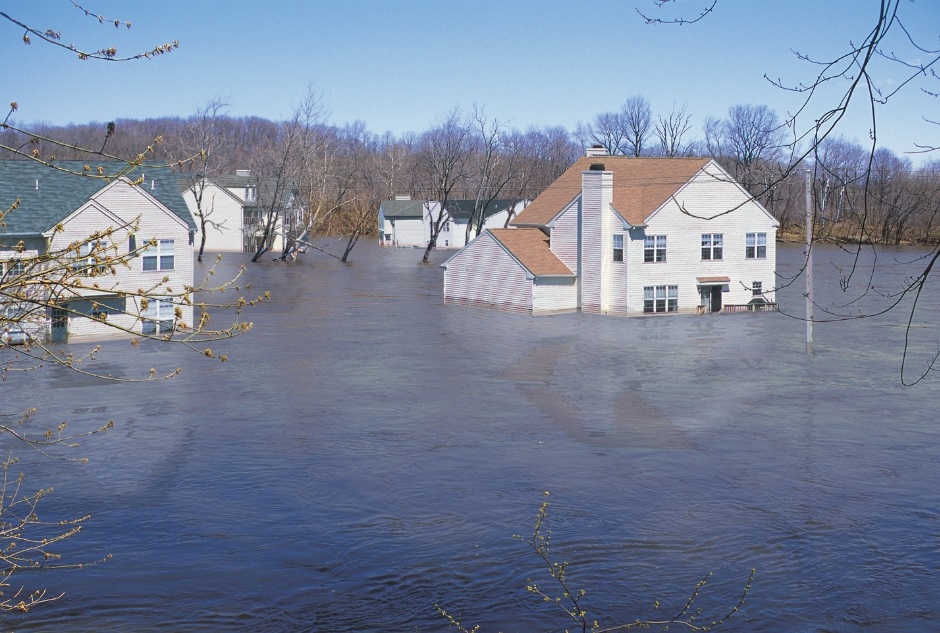Every property is vulnerable to flooding.
Flooding can happen anywhere, any time. In fact, according to FEMA more than 20 percent of National Flood Insurance Program (NFIP) claims are from outside of high-risk flood areas. That’s why it is important to protect your home with flood insurance even if it is located in a low-to-moderate flood risk area.
Most homeowners insurance does NOT cover flood damage.
Unfortunately, many property owners do not find out until it’s too late that their homeowners policy does not cover flooding. Flood insurance is not limited only to properties that are in high-risk flood areas. Flood insurance is a necessity regardless of your flood risk; because anywhere it rains, it can flood.
Types of flood insurance
There are a two different types of flood insurance, the National Flood Insurance Program (NFIP) and private flood insurance. The area you live in will determine which type of flood insurance is best for you.
The NFIP is flood insurance that is offered through FEMA. NFIP flood insurance is available to condo unit owners, renters and homeowners in more than 22,000 participating communities.
Private flood insurance is offered by participating private insurance companies. Private flood insurance options and premiums vary based on the insurance companies that offer it.
To determine the best option for you, speak with one of our insurance agent’s regarding cost and coverage plans. We will be happy to help you understand your options.
Can I purchase flood insurance any time?
Flood insurance has a 30-day waiting period before the policy goes into effect with some exceptions.
With this in mind, it is important to plan ahead so you are not caught without insurance. Flood policies do not cover losses caused by a flood that occurred prior to the policy becoming effective. In addition, you cannot increase your insurance coverage once a flood has begun.
Exceptions:
• If you initially purchased flood insurance while securing, adjusting, or renewing a loan for your property, there is no waiting period. Coverage goes into effect when the loan is closed.
• If you live in an area newly affected by a flood risk map change, review your options with your insurance agent.
• Additionally, the 30-day waiting period may not apply if your property experiences flood damage caused by wildfire in your community. Learn more about the Post- Wildfire Exception at fema.gov/wildfires-you-need-flood-insurance.
What does flood insurance cover?
Building coverage covers the cost to repair or replace your home up the coverage limits on the policy. The maximum limit of coverage depends on whether you choose to buy a federal NFIP or private flood insurance policy. Coverage from the NFIP typically can’t exceed $250,000 for your home’s structure. Private flood insurers can provide much higher limits up to $250,000.
The following items are a sample of those covered under building coverage:
• Electrical and plumbing systems
• Furnaces and water heaters
• Refrigerators, cooking stoves, and built-in appliances like dishwashers
• Permanently installed carpeting
• Permanently installed cabinets, paneling, and bookcases
• Window blinds
• Foundation walls, anchorage systems, and staircases.
• Detached garages
• Fuel tanks, well water tanks and pumps, and solar energy equipment
Contents coverageusually is a separate policy designed to help protect your home and belongings if they are damaged in a flood. Personal property coverage replaces up to $100,000 of items in your home.
• The following items are a sample of those covered under contents coverage:
• Personal belongings such as clothing, furniture, and electronic equipment
• Curtains
• Washer and dryer
• Portable and window air conditioners
• Microwave oven
• Carpets not included in building coverage (e.g., carpet installed over wood floors)
• Valuable items such as original artwork and furs (up to $2,500)
Flood Facts:
• Just one inch of water can cause more than $20,000 in damage.
• It takes just six inches of fast-moving water to sweep an adult off their feet and 12 inches of water to sweep a car away.
• Flash floods typically carry water between 10 and 20 feet high.
• If you live in a 100-year flood plain, your home has a 1% chance of flooding each year.
• Moving water at 10 mph carries the same pressure as wind blowing at 270 mph.
• If your home is in a flood plain and you have a federally backed mortgage, you are required by law to carry flood insurance.
Have questions about flood insurance?
Call our office to discuss flood insurance options or to review your current flood policy at (252) 637-4173. Also, you can get a flood insurance quote directly from our website at https://www.ticnc.com/flood-insurance/.
Source: https://www.floodsmart.gov/flood-insurance/coverage
https://www.fema.gov/sites/default/files/2020-05/FEMA_NFIPBrochure_55X85_092018.pdf

